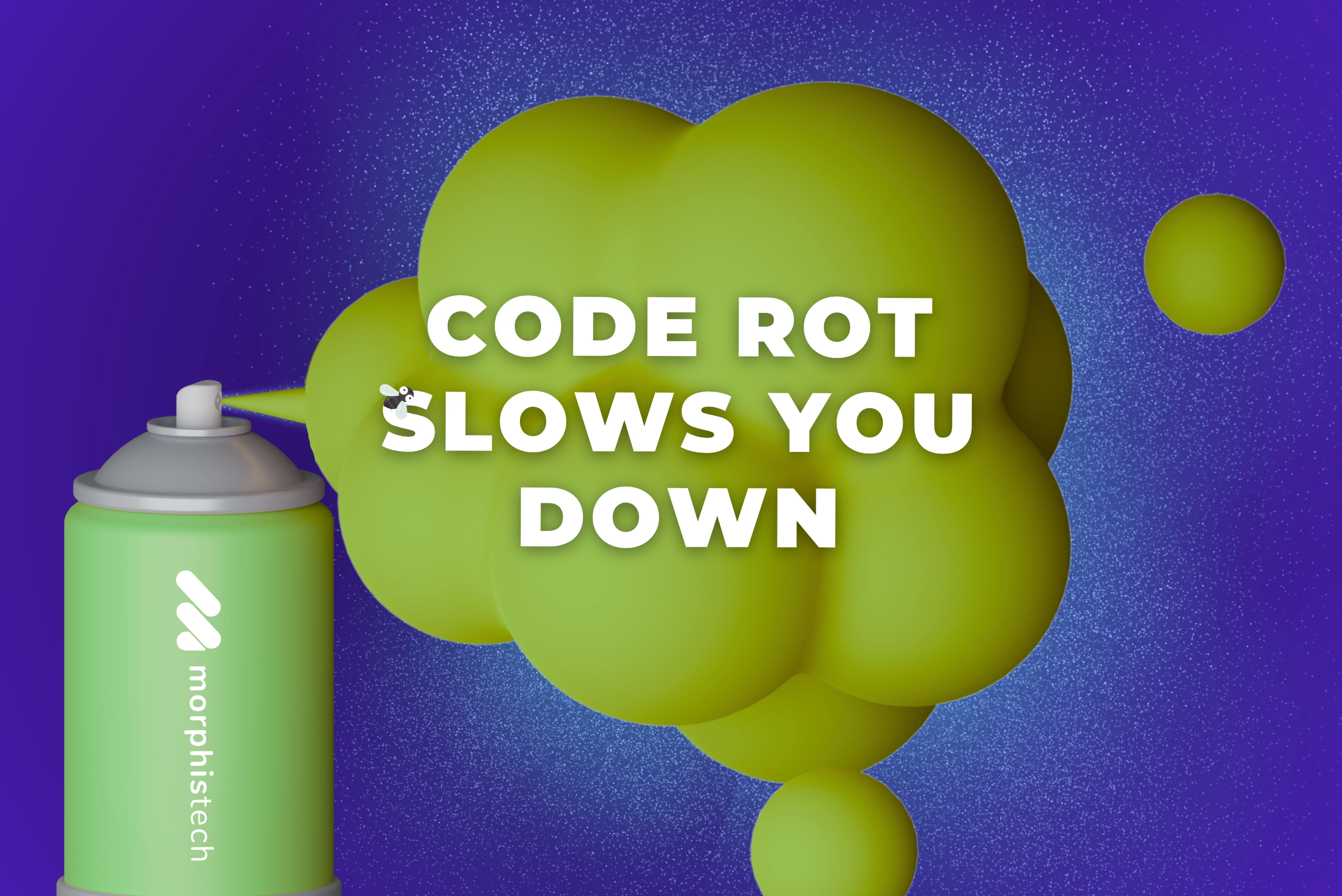
“Code rot isn’t just a technical problem. It’s a business liability.” That statement isn’t hyperbole—it’s a direct hit. Code rot actively drags down:
- Slow delivery timelines
- Increasing security risks
- Skyrocketing maintenance costs
Legacy modernization isn’t just an upgrade—it’s the only way to clear the path for resiliency, speed, and growth.
What Is Code Rot—and Why Should You Care?
Code rot, also known as software rot or software decay, describes the gradual deterioration of code quality over time. It emerges even when nothing changes, thanks to changing dependencies, outdated libraries, or misaligned architecture
There are two main types:
- Active rot: Frequent updates, patches, and rushed fixes without proper refactoring incrementally degrade code clarity and structure.
- Dormant rot: Legacy code that’s unused or neglected becomes a liability—hard to understand, test, or secure.
The Business Impact of Code Rot
Let’s get real—code rot isn’t a quaint engineering problem. It’s a strategic liability.
- Productivity Loss: Teams working on rotted code often hit walls. According to research, low-quality code has 15× more defects and takes 124% longer to fix.
- Security Exposure: Legacy, undocumented paths become attack vectors. Unpatched dependencies and undocumented logic create blindspots.
- Drain on Resources: Studies show that 40–80% of software project costs go into maintaining decay-ridden codebases.
- Technical Debt Amplification: When code rot persists, short-term gains compound into long-term burdens—financial, operational, and competitive.
How to Identify Code Rot—What To Look For
Recognizing rot is half the battle. Watch out for:
- Dead or unreachable code
- Inconsistent or outdated documentation
- Fragile, tightly coupled code that’s hard to test
- Unpatched dependencies with deprecated APIs
- Ballooning bug counts and prolonged release cycles
These symptoms are early warning signs that modernization isn’t optional—it’s necessary.
Code Rot Isn’t Inevitable—Here’s How to Fight It
Some cleanup measures you should adopt:
- Refactoring: Systematic restructuring without changing behavior. Tools like static analysis and cyclomatic complexity help focus where it matters.
- Automate Quality Checks: Enforce standards via CI/CD—fail builds when metrics like complexity or coverage dip.
- Documentation Discipline: Keep architectural diagrams and comments aligned with code state.
- Incremental Refresher: Use agile sprints to tackle rot in small, controlled steps—don’t attempt a “big bang.”
- Leverage AI-Driven Modernization: Generative AI and agents can analyze, refactor, and migrate legacy code—like transforming COBOL to Java with over 90% accuracy in controlled tests.
Modernization—Your Strategic Defense Against Code Rot
Legacy modernization is more than code cleanup—it’s a strategic move to:
- Accelerate feature delivery
- Reduce security risks
- Lower long-term maintenance costs
- Support AI and automation down the road
At Morphis Tech, we partner with large organizations to modernize effectively and safely—preserving business logic, accelerating performance, and future-proofing core systems.
FAQs
What causes code rot?
Outdated dependencies, unmanaged complexity, lack of refactoring, unclear documentation—all contribute to rot.
How is code rot different from technical debt?
Code rot is a subset—an unintentional decay of code quality over time. Technical debt includes intentional shortcuts and architectural decisions, but both damage maintainability.
Can AI help fix code rot?
Yes—AI tools are becoming effective at identifying rot patterns and offering refactoring help, especially when applied on already modernized codebases.
What’s the fastest way to assess rot?
Use static analysis tools and metrics like code churn, complexity, dependency graphs, and coverage versus faults.
References
- Wikipedia: Software Rot — https://en.wikipedia.org/wiki/Software_rot
- “What Is Code Rot, and How Can You Avoid and Fix It?” (8th Light) — https://8thlight.com/insights/code-rot
- “Code Rot: What It Is and How to Identify It” (Typo blog) — https://medium.com/beyond-the-code-by-typo/code-rot-what-it-is-and-how-to-identify-it-ae55ca2140cb
- ITPro: Technical debt rising risk — https://www.itpro.com/business/digital-transformation/paying-down-technical-problem-for-businesses
- Wikipedia: Technical Debt — https://en.wikipedia.org/wiki/Technical_debt
- CodeScene empirical study results — https://en.wikipedia.org/wiki/CodeScene
- AI-Powered Code Transformation (InformationWeek) — https://www.informationweek.com/it-infrastructure/legacy-to-ai-pragmatic-modernization-strategies
- Generative AI in legacy modernization — https://insights.daffodilsw.com/blog/from-maintenance-to-innovation-generative-ai-in-the-evolution-of-legacy-applications
- AI-driven modernization accuracy study — https://arxiv.org/abs/2504.11335
Closing Thought:
Ignoring code rot means accepting slower delivery, higher cost, and eroded security. Legacy modernization isn’t a nice-to-have—it’s your strategy to combat rot and turn your business system into an asset, not an anchor.
Find out how Morphis can enable your digital reinvention
Send download link to:


Leave a Reply